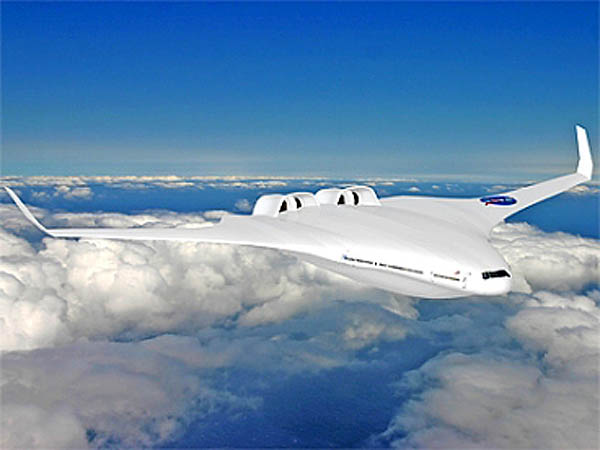In the past 50 years very little has changed in basic airplane design, and due to the growth in air travel the present system we have will not be able to absorb the growth. So NASA granted MIT a $2.1 million research contract to develop environmental and performance concepts that lead aviation into the next stage of evolution. Today MIT unveiled the planes that could set the stage for a fundamental shift in commercial aviation, as they have designed a green airplane that is estimated to use 70 percent less fuel than current planes while also reducing noise and emission of nitrogen oxides by 75 percent. The MIT team met NASA’s challenge by developing two designs: the 180-passenger D “double bubble” series (see image after the Jump) to replace the Boeing 737 class aircraft currently used for domestic flights, and the 350 passenger H “hybrid wing body” series (above) to replace the 777 class aircraft now used for international flights. They write: “The engineers conceived of the D series by reconfiguring the tube-and-wing structure. Instead of using a single fuselage cylinder, they used two partial cylinders placed side by side to create a wider structure whose cross-section resembles two soap bubbles joined together. They also moved the engines from the usual wing-mounted locations to the rear of the fuselage. Unlike the engines on most transport aircraft that take in the high-speed, undisturbed air flow, the D-series engines take in slower moving air that is present in the wake of the fuselage. Known as the Boundary Layer Ingestion (BLI), this technique allows the engines to use less fuel for the same amount of thrust, although the design has several practical drawbacks, such as creating more engine stress.” What’s interesting is how something as simple as moving the jets to the back of the plane could result in such remarkable gains in efficiency. MIT was the only university to lead one of the six U.S. teams that won contracts from NASA in 2008. Four teams (MIT, Boeing, GE Aviation and Northrop Grumman) studied concepts for subsonic (slower than the speed of sound) commercial planes, while Boeing and Lockheed-Martin studied concepts for supersonic (faster than the speed of sound) commercial aircraft. Can’t wait to see what they come up with…
Hit the Jump to see an image of the D “double bubble” series…


